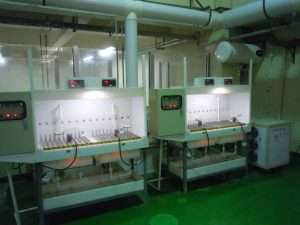Call us now:
Electrolytic refining is a commonly used method for refining various metals, including gold. It is a process that involves the use of an electrolyte, an electric current, and electrodes to purify and separate impurities from the gold. Here's a step-by-step overview of the electrolytic refining process for gold:
Preparation of the electrolyte: The electrolyte used in the process is typically a solution of gold chloride (AuCl3) or gold cyanide (AuCN). The solution is prepared by dissolving gold-containing materials, such as gold ore or scrap gold, in an appropriate solvent.
Setup of electrolytic cell: An electrolytic cell is constructed using a tank or container that serves as the electrolyte bath. The container is divided into two compartments by a partition or membrane that prevents the mixing of the anode and cathode products. The anode (positive electrode) is typically made of impure gold, while the cathode (negative electrode) is made of a pure gold sheet.
Immersion of electrodes: The anode and cathode are immersed in the electrolyte solution. The anode is placed in the compartment where the gold to be refined is located, while the cathode is placed in the other compartment.
Application of electric current: A direct current (DC) is passed through the electrolyte solution, with the anode connected to the positive terminal and the cathode connected to the negative terminal of the power supply. This electric current provides the energy required for the refining process.
Dissolution of anode: As the electric current flows through the cell, gold atoms from the impure anode dissolve into the electrolyte as gold ions (Au+). The impurities present in the anode also dissolve and form ions in the electrolyte.
Deposition on cathode: The gold ions in the electrolyte are attracted to the cathode (negative electrode) and are reduced back to metallic gold atoms. These gold atoms then deposit and accumulate on the surface of the cathode, gradually increasing its purity.
Removal of impurities: The impurities that were present in the anode are left behind in the electrolyte solution or settle at the bottom of the cell as a sludge. Periodically, the electrolyte is tested, and if necessary, it is replaced or treated to remove these impurities.
Collection of refined gold: Over time, the refined gold layer on the cathode grows and reaches a desired thickness. The cathode is then removed from the cell, and the deposited gold is carefully detached. The gold is further processed, such as by melting or casting, to obtain the final purified gold product.


